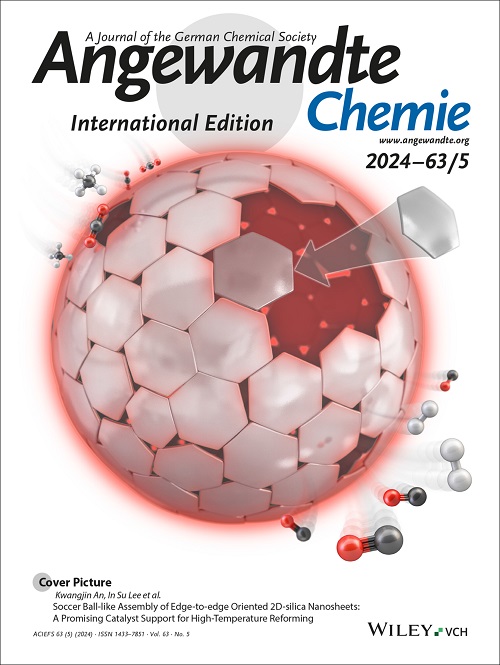Catalytic Polymerization of n‐Doped Poly(benzodifurandione) (n‐PBDF) Using Parts Per Million (ppm) Level of Molybdenum Trioxide
IF 16.9
1区 化学
Q1 CHEMISTRY, MULTIDISCIPLINARY
引用次数: 0
Abstract
The recent discovery of highly conductive, solution‐processable, n‐doped poly(benzodifurandione) (n‐PBDF) has significantly pushed the boundaries of organic electronics. However, to maximize its practical impact, a scalable and cost‐effective synthetic method is essential. Initially, n‐PBDF was synthesized via duroquinone‐mediated or copper‐catalyzed polymerizations, but these methods required prolonged dialysis, limiting their scalability. Our recent SeO₂‐catalyzed polymerization improved efficiency but still necessitated centrifugation and filtration to remove solid selenium byproducts. In this work, we introduce a highly efficient molybdenum trioxide (MoO₃)‐catalyzed polymerization of n‐PBDF. Remarkably, MoO₃ at parts‐per‐million (ppm) concentrations achieves near‐quantitative monomer conversion (>99% by NMR), eliminating the need for purification. Kinetic studies demonstrate that this polymerization follows a chain‐growth mechanism, enabling the synthesis of high‐quality n‐PBDF polymers with controlled particle sizes and block copolymers. Mechanistic investigations reveal that MoO₃ mediates an oxidative pathway involving dimethyl sulfoxide (DMSO), with dimethyl sulfide (DMS) identified as the reduction product. This breakthrough not only provides a scalable, low‐cost route to high‐quality n‐PBDF but also unlocks new synthetic opportunities, significantly expanding the synthetic toolbox for functional polymers.用百万分之一(ppm)浓度的三氧化钼催化聚合n掺杂聚苯二呋喃二酮(n - PBDF)
最近发现的高导电性,可溶液加工,n掺杂的聚(苯二呋喃二酮)(n - PBDF)显著地推动了有机电子学的边界。然而,为了最大限度地发挥其实际影响,一种可扩展且具有成本效益的合成方法是必不可少的。最初,n - PBDF是通过duroquinone介导或铜催化聚合合成的,但这些方法需要长时间的透析,限制了它们的可扩展性。我们最近的SeO 2催化聚合提高了效率,但仍然需要离心和过滤来去除固体硒副产物。在这项工作中,我们引入了一种高效的三氧化钼(MoO₃)催化n - PBDF聚合。值得注意的是,MoO₃在百万分之一(ppm)浓度下实现了近定量的单体转化(通过NMR达到99%),消除了纯化的需要。动力学研究表明,这种聚合遵循链式生长机制,可以合成具有可控粒径和嵌段共聚物的高质量n - PBDF聚合物。机理研究表明,MoO₃介导了一个涉及二甲基亚砜(DMSO)的氧化途径,其中二甲硫醚(DMS)被确定为还原产物。这一突破不仅为高质量的n - PBDF提供了一条可扩展、低成本的途径,而且还开辟了新的合成机会,大大扩展了功能聚合物的合成工具箱。
本文章由计算机程序翻译,如有差异,请以英文原文为准。
求助全文
约1分钟内获得全文
求助全文
来源期刊
CiteScore
26.60
自引率
6.60%
发文量
3549
审稿时长
1.5 months
期刊介绍:
Angewandte Chemie, a journal of the German Chemical Society (GDCh), maintains a leading position among scholarly journals in general chemistry with an impressive Impact Factor of 16.6 (2022 Journal Citation Reports, Clarivate, 2023). Published weekly in a reader-friendly format, it features new articles almost every day. Established in 1887, Angewandte Chemie is a prominent chemistry journal, offering a dynamic blend of Review-type articles, Highlights, Communications, and Research Articles on a weekly basis, making it unique in the field.

 求助内容:
求助内容: 应助结果提醒方式:
应助结果提醒方式:


